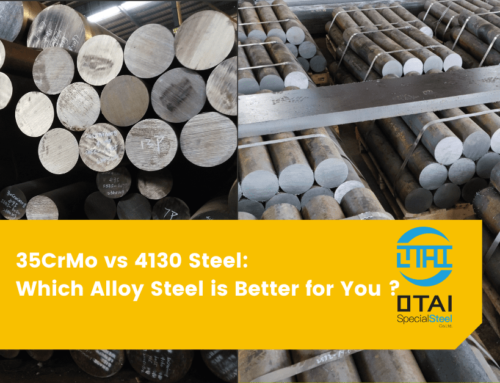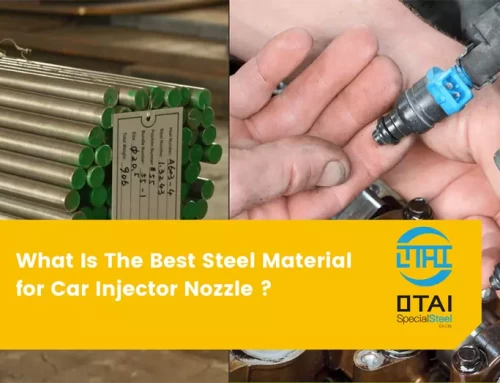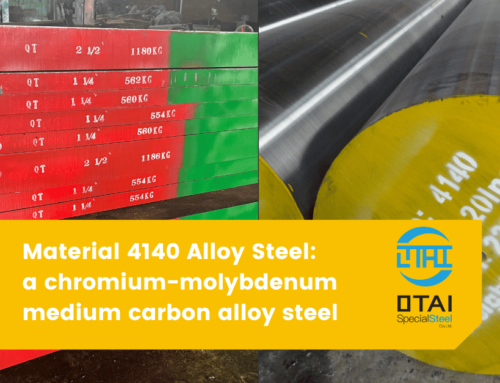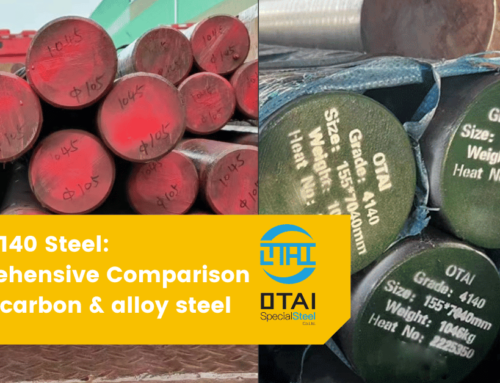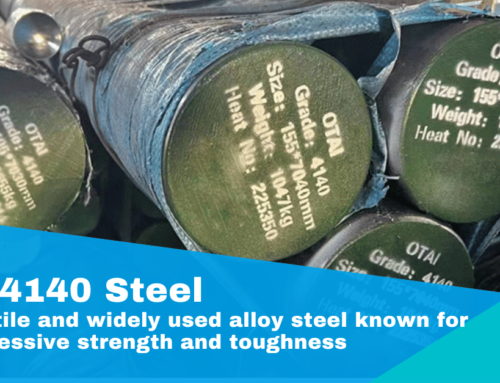A2 steel is knows as air harden steel while O1 steel is oil harden steel. Here we briefly compare this two tool steel grades as follows.
- Both A2 and O1 Steel Belongs to the Same Standard—ASTM A681
Both A2 steel and O1 steel are cold work tool steel grades in ASTM A681 standard. However, A2 tool steel belongs to A-Group, which have high hardenability and may be hardened in air. O1 tool steel belongs to O-Group, which must be hardened by quenching in oil.
- Chemical Different Between A2 vs O1 Steel
| ASTM A681 | C | Mn | P | S | Si | Cr | V | Mo | ||||||||
| A2/T30102 | 0.95 | 1.05 | 0.40 | 1.00 | 0.03 | 0.03 | 0.10 | 0.50 | 4.75 | 5.50 | 0.15 | 0.50 | 0.90 | 1.40 | ||
| ASTM A681 | C | Mn | P | S | Si | Cr | V | Mo | W | |||||||
| O1/T30501 | 0.85 | 1.00 | 1.00 | 1.40 | 0.03 | 0.03 | 0.10 | 0.50 | 0.40 | 0.70 | . . . | 0.30 | . . . | . . . | 0.40 | 0.60 |
- Different Properties A2 vs O1 Steel (especially for steel blade)
O1 steel, a simple high carbon tool steel with very little added to the iron/steel alloy other than 1.1% manganese. That pinch of Mn allows the steel to harden with an oil quench (the “O” in O1 stands for Oil.) Oil removes heat more slowly than water, reducing the thermal shock that occurs when orange-hot steel is plunged into water. Reducing that thermal shock minimizes the risk of cracking or distortion in the hardened piece. With an alloy as simple as O1 steel, containing so few alloying elements, the hardened grain structure is as fine as possible which allows honing to the sharpest possible edge.
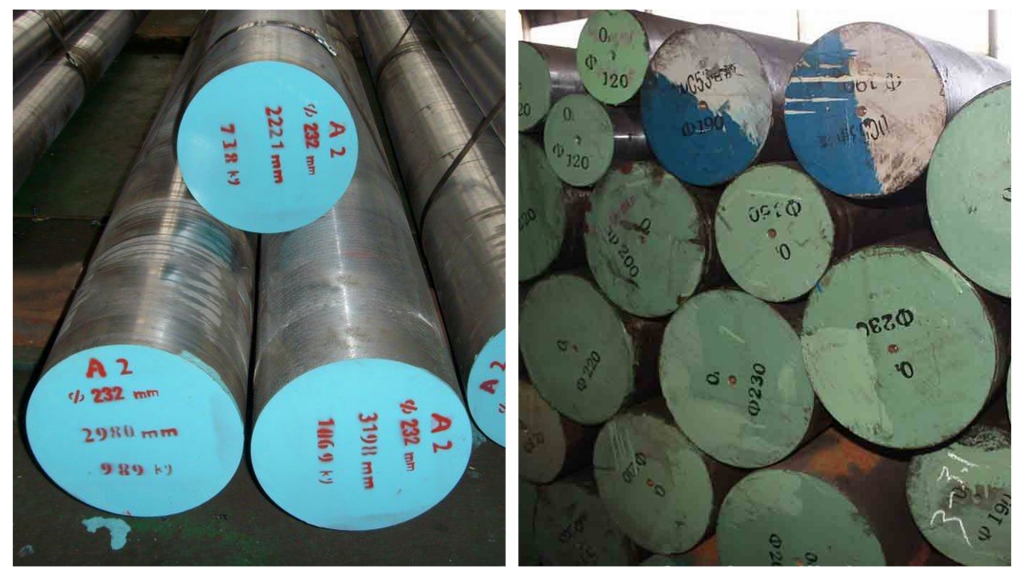
AISI A2 steel differs from O1 steel with the addition of 5% chromium and 1.1% molybdenum, allowing it to quench in still air (“A” for Air.) While “stainless” amounts of chromium (12% or more) make tool steel “gummy” and hard to sharpen, the modest amount of chromium in A2 steel improves its toughness and abrasion resistance, but imparts only a slight measure of corrosion resistance (like high carbon steel, it will rust and appropriate preventative care must be taken.) But there is a trade off. During heat treatment the chromium addition combines with some of the carbon in the alloy to form chromium carbides – tough, hard particles dispersed through the steel. These carbides are the primary contributors to A2’s celebrated edge retention. However, during heat treatment, the chromium carbides can grow quite large – large enough to affect your ability to hone the edge as close to zero-radius as you may want. And these carbides are held in place with less strength than the rest of the steel matrix which can allow them to pop out under the stress of honing or cutting leaving a small gap in the edge. To strengthen the edge we recommend a larger bevel angle for steel A2 than we would use for steel O1. For a bench plane iron, try your A2 steel at about 30° or 33°.
A2 steel is one of the steels that respond well to cryogenic treatment. This extreme cold treatment (-320°F) essentially finishes the original quench, increasing the steel’s toughness without any decrease in hardness. You get increased wear resistance without any increase in brittleness so a cryogenically treated blade will hold its edge longer. You can keep working instead of sharpening. A2 steel is a great steel that offers a real improvement in edge retention. O1 steel, on the other hand, is still preferred by many for its relative ease of sharpening and its ability to get sharper.

